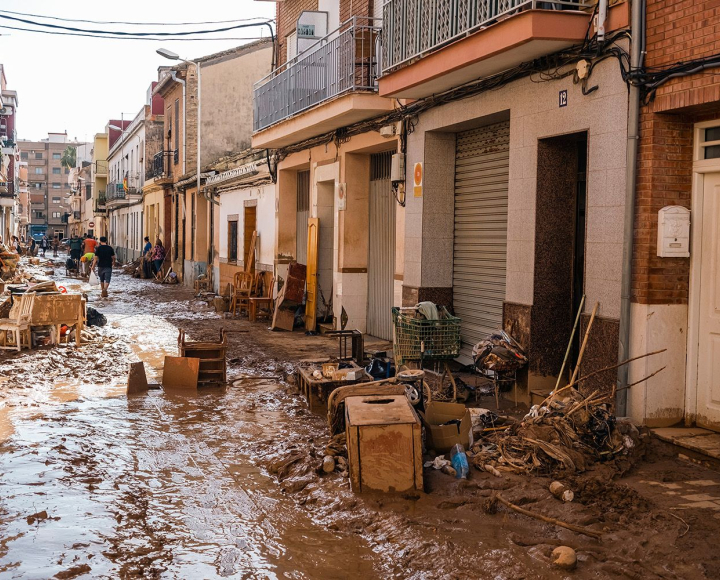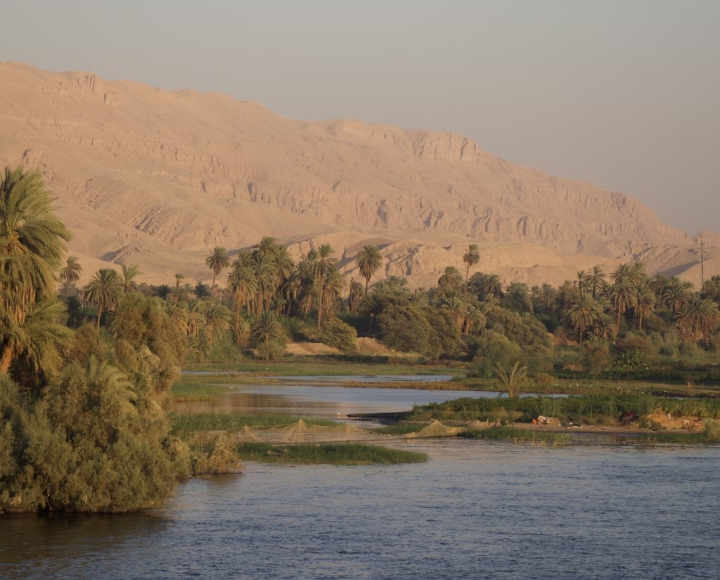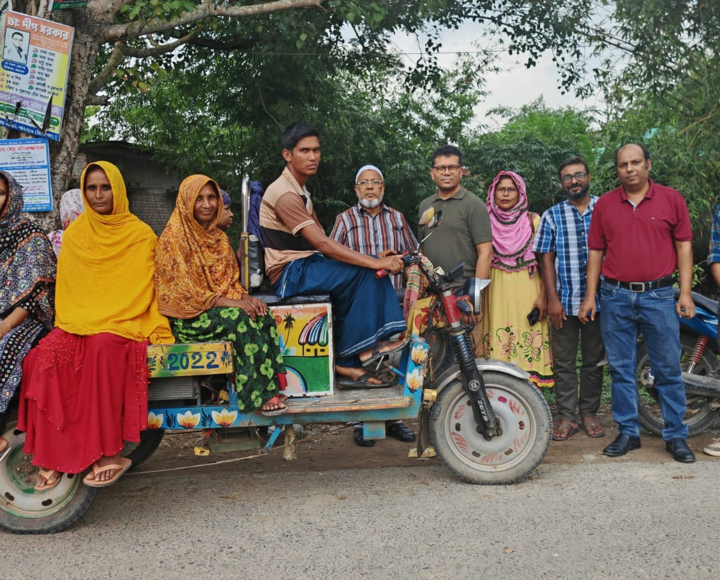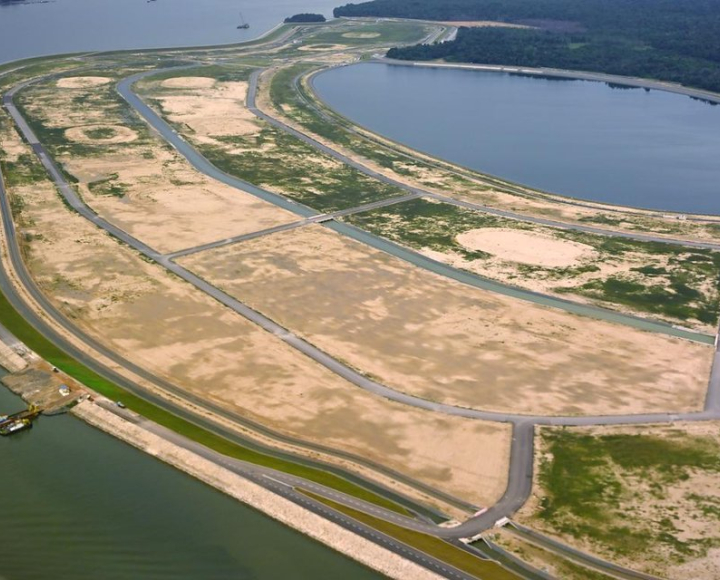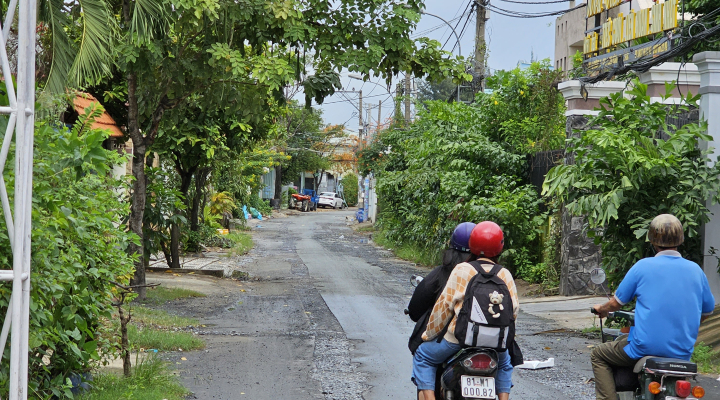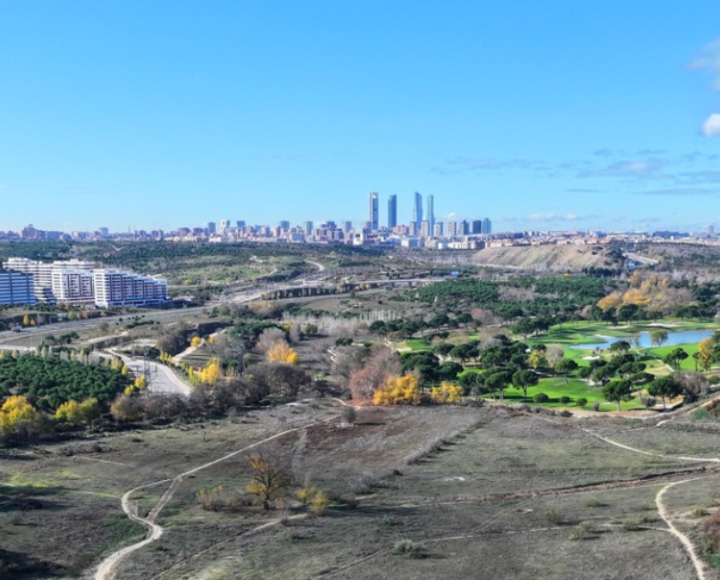En route to the water sensitive city of the future
Cities all over the world are facing the impact of climate change and are having to deal with issues such as too much or too little water. At the same time, water can play a central role in creating liveable and prosperous cities. Water will shape the city of the future in all sorts of ways. One thing is certain, cities will need to be part of a natural system and take water into account much more than they are doing now. If a city wants to be resilient, it has to live with water.
We need to head towards water sensitive cities. This is the message of Nanco Dolman, Leading Professional in Water Resilient Cities at Royal HaskoningDHV and an international front runner in Water Sensitive Urban Design (WSUD).
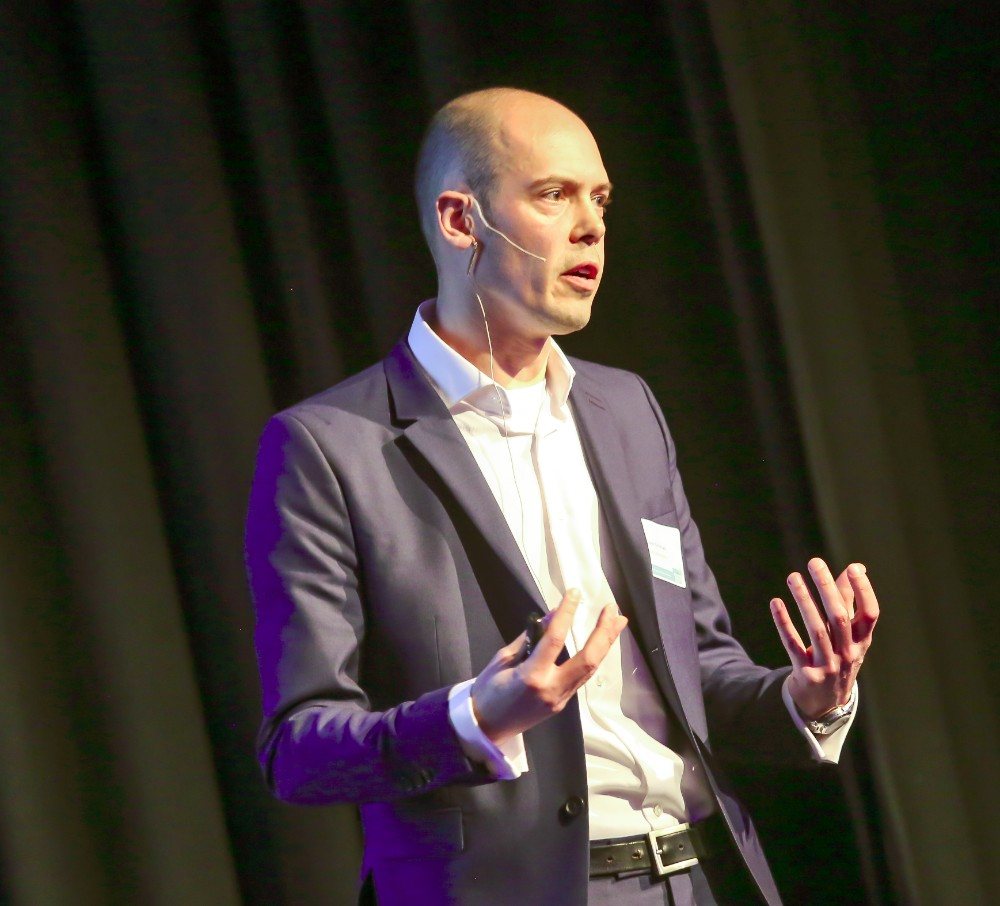

Resilient cities: Where does the quest begin?
‘We first need to view the city from a historical perspective. We can then move to the future, stopping at the present on the way. A city is always part of a natural system. Cities are usually built close to a source of water, for drinking, agriculture and transport. The water that brings us life and energy is the very same water that poses the biggest threat to society. Apart from the climate threat, urbanisation brings its own problems: more people, more concrete and more assets. When disasters strike, there are more victims and there is more financial damage. The population growth is not the only demographic factor, what that population does is also important. We are consuming more and using more water and energy. These have to be sourced from somewhere.’
What is Water Sensitive Urban Design’s approach?
‘First, it looks at the city as a part of a water catchment area, including upstream and downstream, and everything that comes with it. Second, it recognises the potential and the value of water. We need to acknowledge the importance of building buffers, catching rainwater, using water for energy generation, for heating and cooling, for biodiversity and so on – and thus, for people’s health and well-being. Water is the unifying factor, the foundation of the city of the future. Third, and this is the trickiest to achieve, we need to improve water awareness amongst all stakeholders and facilitate behaviour change. This not only applies to government authorities, but to citizens and businesses too. Roughly speaking, about half of each city is in private hands, so governments cannot do it alone.
We need to reach a logical new normal. If you do not reach this mature implementation phase, you will simply get stuck in fabulous imaginary projects. These may be iconic, but their impact is as limited as their lifespan. Cities need to move beyond only finding technical solutions when issues arise; they must dare to learn from nature and use natural systems and processes in the form of nature-based solutions. Nature must be a source of inspiration.’
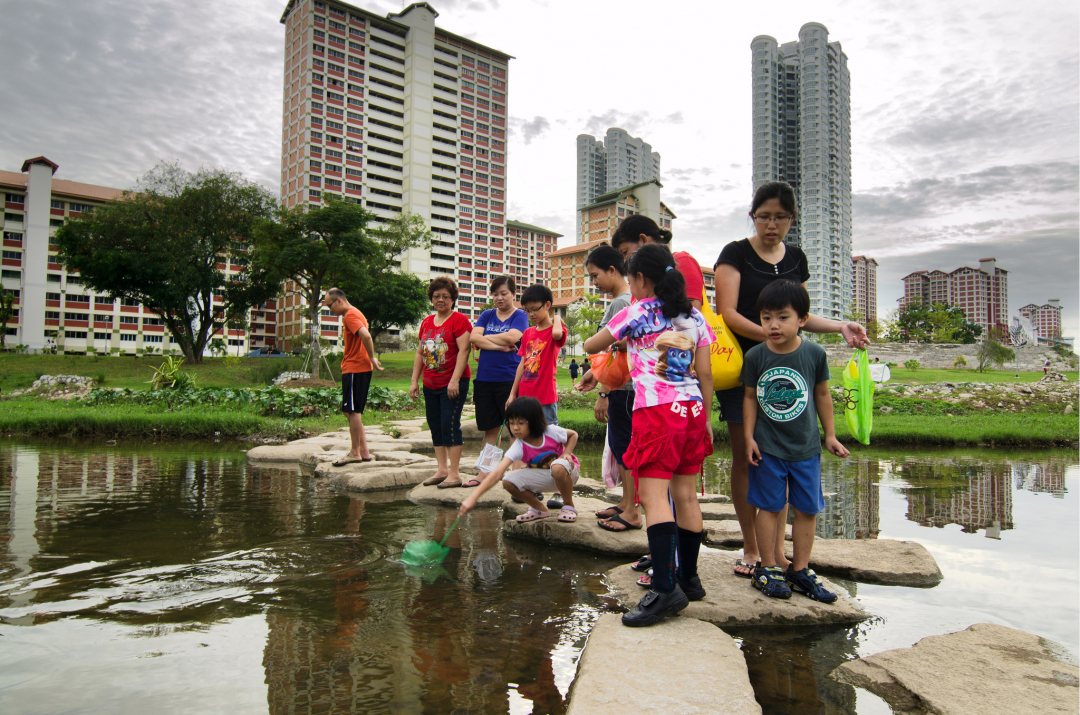
How can cities achieve self-sufficiency in water?
‘One way is to further close the water cycle – along with closing the food, energy and waste cycles. For example, Tokyo was historically prone to land subsidence due to groundwater extraction. As early as the 1970s, the city had to take drastic measures to limit or even stop the subsidence rate. Tokyo ended groundwater extractions and transferred to other water sources, such as rain, sea and surface water. Today Tokyo is a water-saving city. Almost all rainwater no longer drains away but is retained and used. This is quite an achievement, especially considering that Tokyo is the world’s largest metropolitan area. Further, a lot more purified water is reused. Many people have a basin on their toilet cisterns so that the water used to wash hands is used again to flush the toilet.
‘Another example is Singapore. The city has ambitions to be largely self-sufficient in water by catching every drop of rain, reusing water time and time again, and desilting water. By 2060, 55 percent of its demand for water will be met by purifying wastewater to a high quality. This is unthinkable in most countries.’
To what degree can you compare cities?
‘Up to a point, cities have a shared historical urban development in relation to water systems and functions. They often face the same water challenges. That said, the contexts can vary widely in terms of location, soil, climate, socio-cultural environment, the development phase the city is in and the political situation. In practice, this means the nuance of the challenges and their solutions can be extremely different.
‘Western cities tend to be stuck in a single function design that is anchored in an organic and administrative framework. One common feature is that they have all pushed water, to varying degrees, out of the city. Either they stop it from coming into the city at all or they have hidden it. In this case, the water still flows but flows under the city instead of through it. What you now see is that water is coming back to cities, little by little. It is starting to be visible. We call this, “daylighting” and it shows a real recognition of the role and function of water.’
‘Cities that have little or no sewage system can take a giant leap forward in one go. Just think about telecommunications, many countries skipped laying fixed phone lines and went straight for mobile networks. The same can be done with water in the city. Cities in low-income and emerging countries do not have the issue of the capital destruction of the existing infrastructure. However, you need guts – and money – to leapfrog.’
How do you link the short-term to the long-term?
‘It is good to have a long-term vision that goes beyond the next few decades. We now talk a lot about 2050, it seems far away, but we should actually be brave enough to look 100 years into the future, past 2100. We can then work backwards to see what can and should be done now. A transition roadmap will help create a lively, liveable and prosperous city that has sustainable solutions for flooding, drought, heat stress, and water availability. It will help make the city and its surroundings water robust and climate proof.
‘The transition roadmap should not be set in stone though as unforeseen events and developments will occur along the way. The vision of the future should also not be too radical, but an attractive prospect that citizens, governments and companies will support and act upon. Further, it should have guiding principles. One example is that the Netherlands currently has meltwater rivers which may become rainwater rivers in the future. We are already experiencing an increase in dry and warm summers so without the water that flows into the country, we need to do something if we are to be self-sufficient in water. These guiding principles are also used to identify and apply ‘no regret’ measures for the short term.’
Are these badly needed too?
‘Definitely. In April 2018, Cape Town nearly reached Day Zero, the day that the drinking water would be used up. This was avoided at the very last minute. It was a loud wake-up call, not only for South Africa, but internationally. Hopefully, we will draw lessons from it. These days, people are more open to the idea of a self-sufficient and self-supporting city, and this is further increased amongst their children – the next generation. A broad, positive movement is emerging, and the philosophy of the Water Sensitive Urban Design is gaining ground and helping create a sense of community. We’re seeing this both among leadership and stakeholders. They are starting to take responsibility and are prepared to collaborate.’
Does the movement also offer opportunities for the Dutch water sector?
‘For years we have pleaded internationally for integrated, sustainable solutions, including nature-based solutions, integrated water resource management and transboundary water cooperation. The recognition of the need for these is growing. The World Bank, for example, is requiring nature-based solutions to be included in loans for flood prevention measures. This ties in with the ideas behind Water Sensitive Urban Design.’
What do you see as your role as a player in the market?
‘As a player in the market, I believe that we should be responsible for sketching that broader vision of the future, the integrated approach and the multifunctionality. A dike isn’t just a flood defence but can serve as an elevated park at the same time and, as many of our clients want, a water square can be both a buffer and a social space. You could also zoom out and look at the broader picture. That water square could also be a rain garden that helps reduce heat stress and particulate matter and is good for the biodiversity.
‘The concept of ‘the city as a sponge’ is also a good example as it is embedded in the principle of ‘living with water’ – the collection, storage and use of water. Living with water does not avoid problems but instead, makes sure the city is resilient. The concept also helps make cities lively and liveable and stimulates biodiversity.
‘Collaboration and co-creation with local partners are essential for us. Their knowledge and understanding are crucial. We see this, for example, in the Integrated regional plan for the Mekong Delta region (MDIRP) in Vietnam. The Mekong Delta ranks amongst the top 5 deltas in the world most likely to be severely affected in terms of climate change. Adaptive strategies will help us to build on a sustainable and climate resilient future for people, ecosystems and natural resources of the Delta.. We draw a lot of inspiration from the interaction and it also clarifies shared ownership. A project will only work in the long term if the local stakeholders have and take responsibility. Only then will it be supported. This is the only way that you can ensure that it will continue and further develop once you are gone.’
The subject goes beyond only technology. Does this also need wider expertise?
‘Luckily, urban resilience is becoming less dominated by water specialists such as engineers and hydrologists. We are now seeing all sorts of specialties involved, such as urban designers, landscape architects, behavioural scientists, ecologists, financial experts and IT specialists. They are starting to work together more closely, and this is very positive. We are still in early stages and are trying to move away from pillarisation because it does not benefit the quality of the solutions. We would like to make the ethos of water sensitive urban design and urban resilience more transparent.’
Lastly, is the pandemic influencing all this?
‘Historically, disasters – including pandemics – and all their problems have also led to progress. The cholera epidemics in the 19th century in Europe led to better drinking water provision and the laying of sewer systems. And catastrophic floods have led to delta plans, such as right here in the Netherlands.
A pandemic will certainly lead to shifts in society. Some activities will be stopped, but will be replaced by other initiatives. Many businesses are doing really well at the moment. The pandemic highlights the value of green space in cities and gives us new insights in areas such as car ownership and mobility. A road lane could become a green strip with trees again. The pandemic is also making many more people work from home. These people are starting to see their immediate surroundings with new eyes and are attaching greater value to safety and liveability. This creates opportunities for blue-green initiatives.’
These #WaterTalks are a source of inspiration on water relevant topics such as Urban Resilience, supported by the Partners for Water programme. They are the views of the interviewee and do not necessarily reflect those of the Dutch Water Sector as a whole.
If you are interested in discussing Resilience and the Dutch Water Sector, please contact the Climate Resilience Team at Netherlands Water Partnership: resilience@nwp.nl.




